If there’s one thing that instantly evokes the warmth and soul of Bengal, it’s a Bengali sweet. Rooted in centuries-old traditions, these delicacies are more than just desserts—they’re an emotion. Whether you’re visiting Kolkata or exploring the vibrant Bengali culture from afar, these 15 sweets are a must-try before you leave this world. Every bite of these irresistible Bengali sweets is a burst of tradition and flavor that’s sure to win your heart..
1. Rasgulla (Rosogolla)
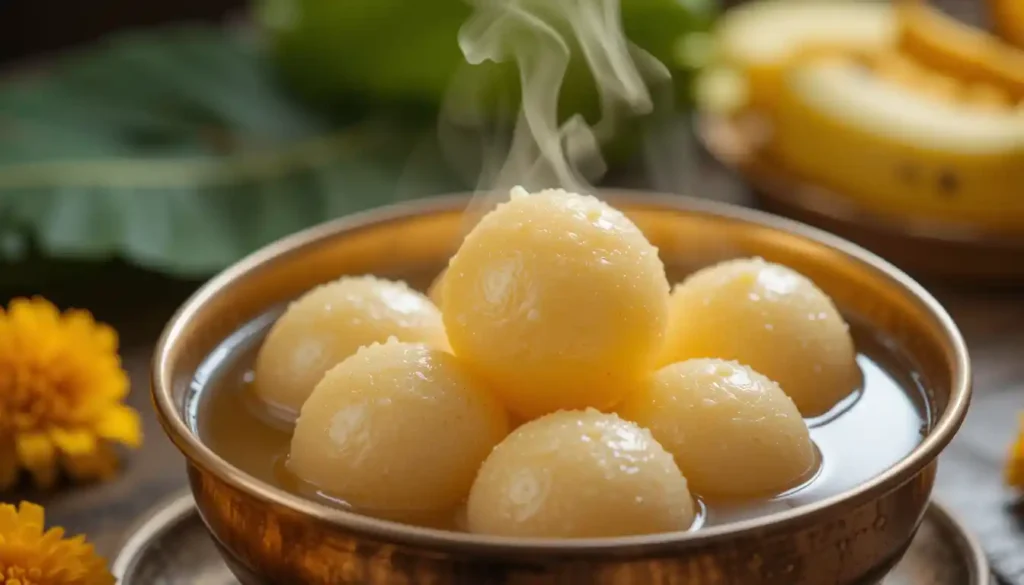
The undisputed king of Bengali sweets, Rasgulla is a spongy, syrup-soaked ball of joy made from fresh chenna (paneer). Renowned for its soft, velvety texture and subtle sweetness, this Bengali sweet has stood the test of time as a cherished favorite.
Insider Tip: For the authentic experience, visit K.C. Legendary sweet shops like Bhim Chandra Nag and K.C. Das in Kolkata have perfected this art.
2. Sandesh

Sandesh, a quintessential Bengali sweet, blends simplicity and elegance—made with fresh chhena and gently enhanced with aromatic notes of cardamom, saffron, or winter-special Nolen Gur., or Nolen Gur (date palm jaggery).
Varieties include:
- Kacha Golla (soft and crumbly)
- Jolbhora (liquid center surprise)
- Norom Paak (melt-in-mouth)
Why it stands out: Minimal ingredients, yet an explosion of flavor.
3. Mishti Doi

Mishti Doi is a beloved Bengali sweet yogurt, known for its silky texture, gentle tang, and slow-fermented richness that leaves a lingering taste of tradition in every spoonful.. It’s usuallyTraditionally served in earthen pots, this Bengali sweet absorbs a subtle earthy aroma that naturally enhances its rich, creamy flavor.
Pro Tip: Try it chilled on a summer day—it’s divine.
4. Pantua
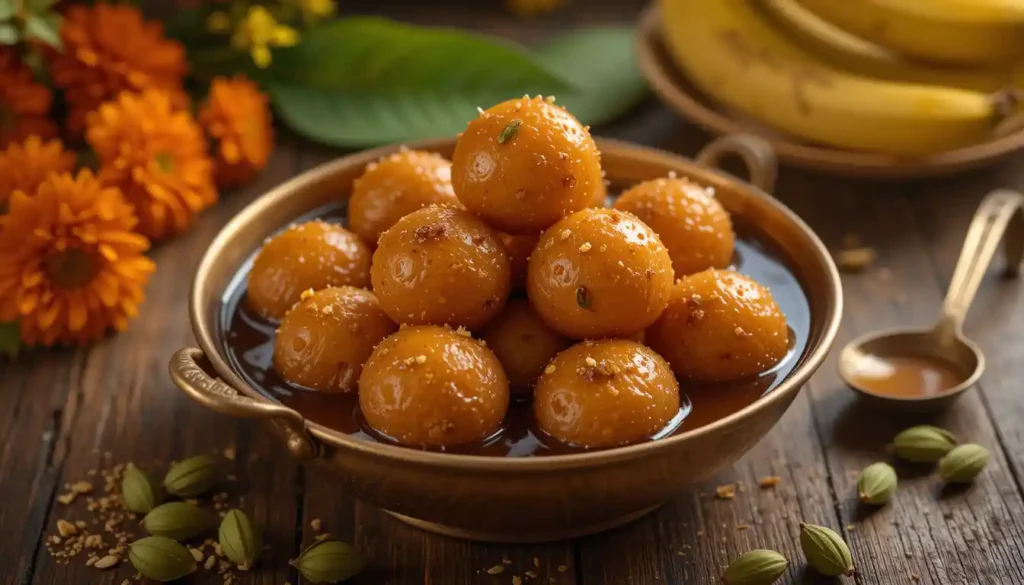
Often compared to gulab jamun but with a twist, Pantua is deep-fried dough balls made from khoya or chenna and soaked in sugar syrup.
Did you know? It’s older than gulab jamun and has a denser texture.
5. Chanar Jilipi
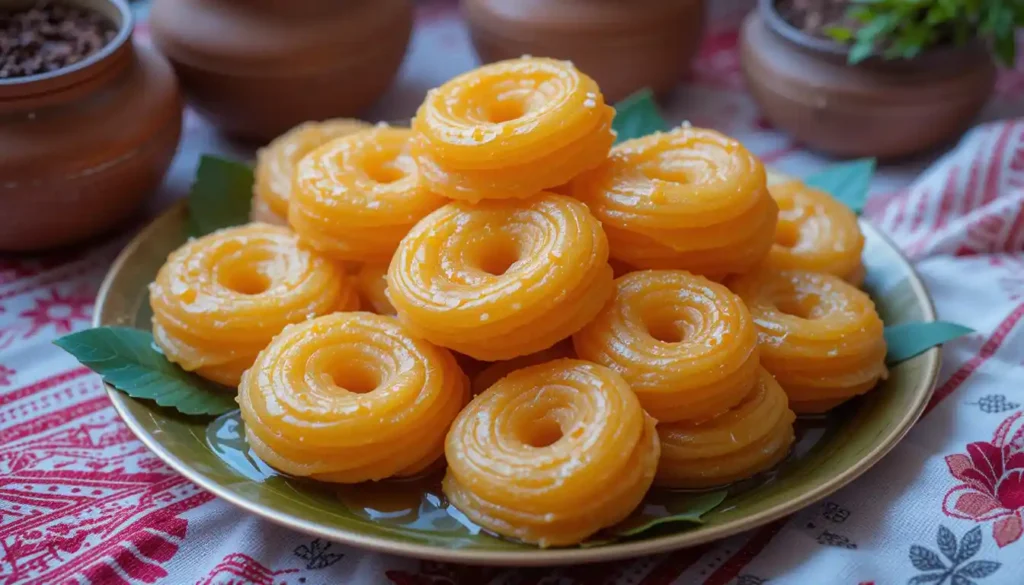
A unique Bengali take on jalebi, Chanar Jilipi is made from fresh paneer spirals soaked in thick sugar syrup.
Texture: Soft and rich inside, slightly crispy outside.
you might be interested in this topic: 10 Best Indian Festivals to Celebrate in the U.S. in 2025
6. Kheer Kadam
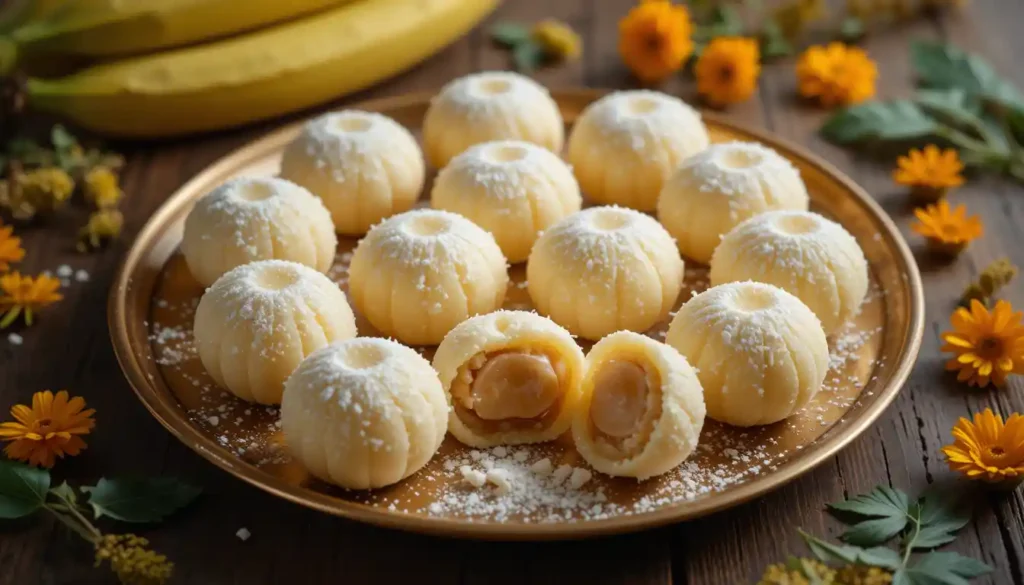
Kheer Kadam is a two-layered surprise: a rasgulla wrapped in a layer of khoya and rolled in powdered sugar.
Why it’s special: Combines two sweets in one—pure innovation!
7. Nolen Gur Sandesh
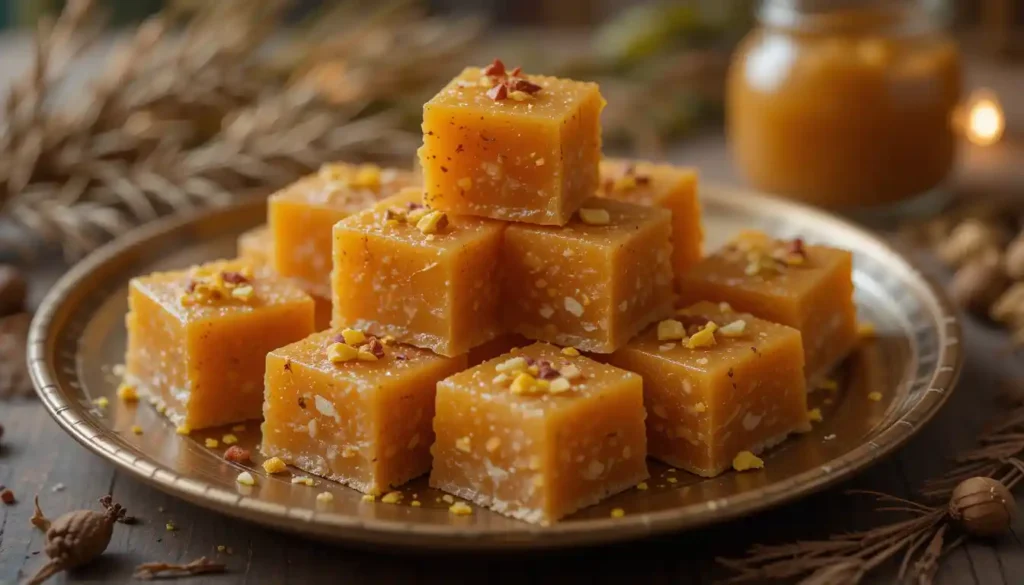
Made with Nolen Gur (date palm jaggery), this winter specialty takes Sandesh to another level.
Flavor profile: Caramel-like depth with a seasonal, earthy sweetness.
8. Rosh Bora

Rosh Bora is a traditional Bengali sweet made from crispy, deep-fried lentil fritters soaked in fragrant sugar syrup—offering a perfect blend of crunch and melt-in-your-mouth sweetness.
Cultural Note: Often made during Poush Parbon (a winter harvest festival).
9. Pati Shapta
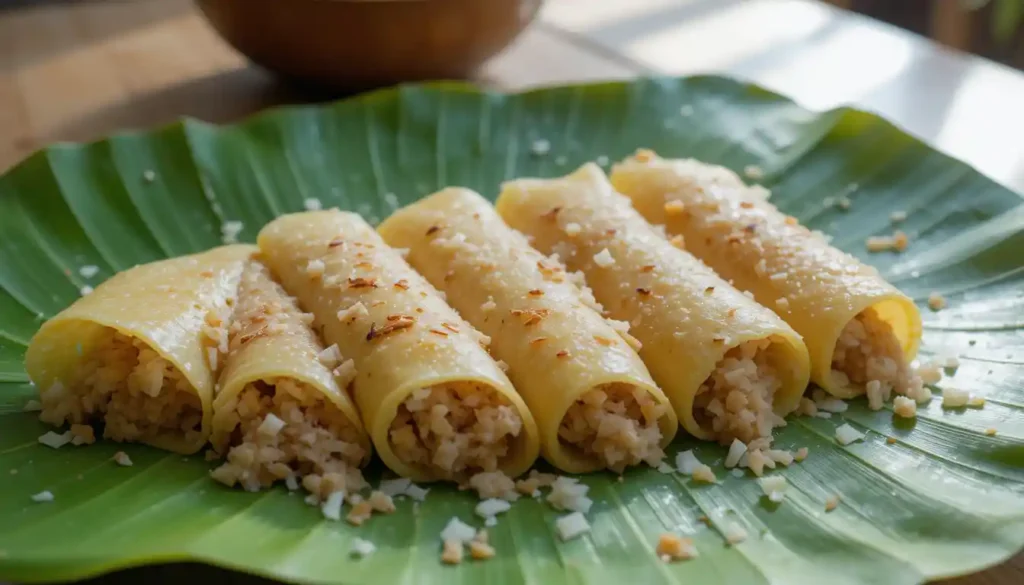
Pati Shapta, a winter favorite among Bengali sweets, is a rolled crepe stuffed with a warm filling of jaggery and coconut.
Fun fact: Served hot or cold, it tastes like a Bengali version of a dessert spring roll.
10. Sita Bhog
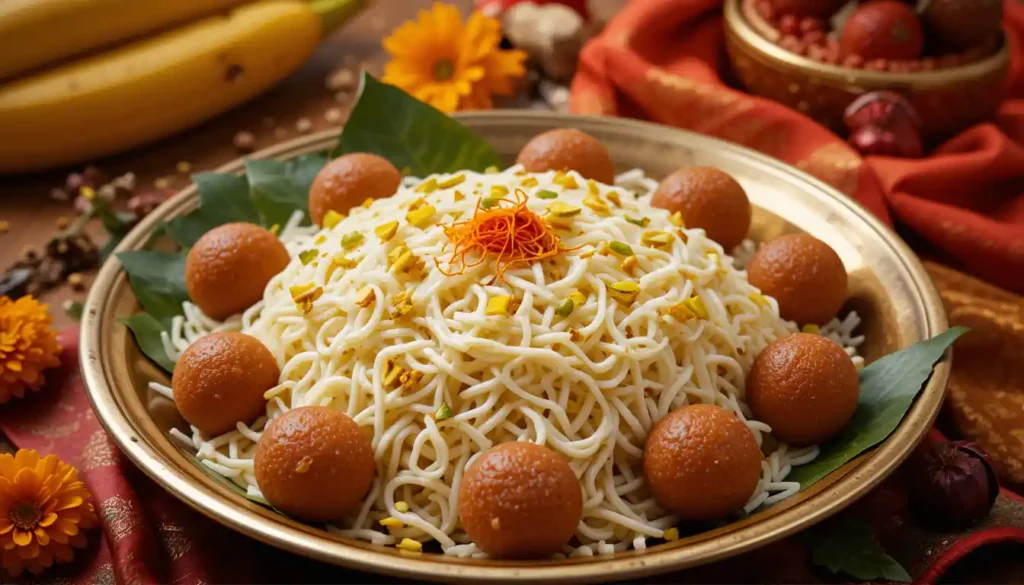
A delicate blend of rice vermicelli, gulab jamun balls, and sugar, Sita Bhog is often mistaken for a savory dish at first glance.
Region highlight: Popular in Bardhaman, West Bengal.
11. Cham Cham
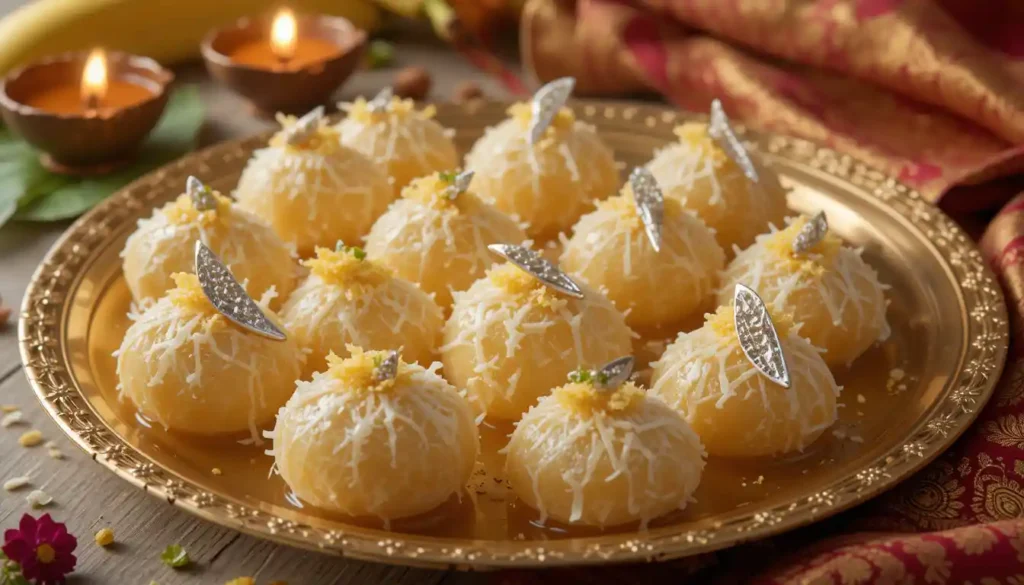
also known as Chomchom, is an oval-shaped Bengali sweet soaked in syrup and often filled with khoya or dry fruits—perfect for festivals and joyous occasions.
Colorful touch: Often tinted with saffron, rose, or even food coloring.
12. Labanga Latika
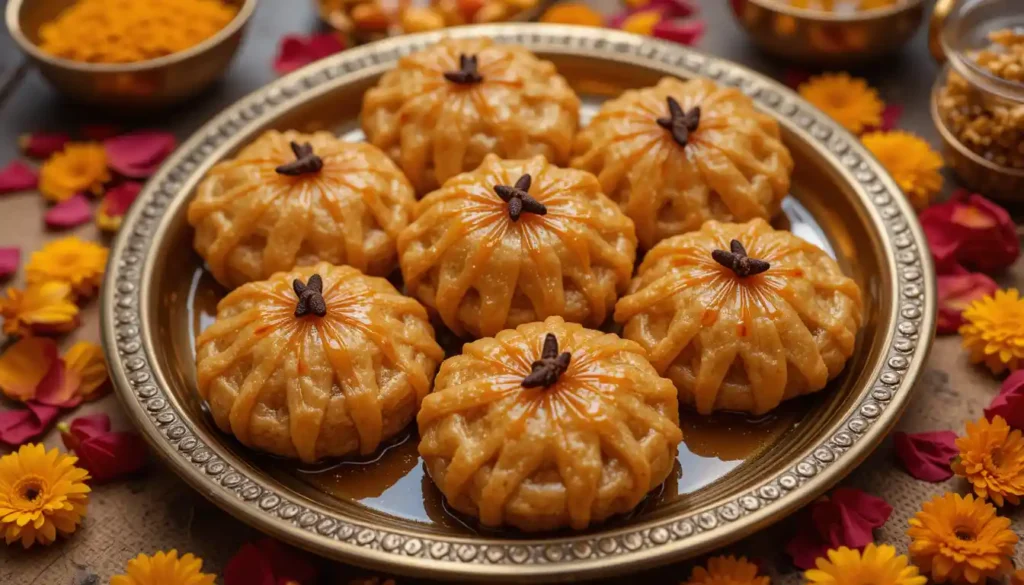
Labanga Latika is an artisanal Bengali sweet featuring a delicate pastry filled with khoya, sealed with a clove, deep-fried to a golden crisp, and finished with a soak in fragrant sugar syrup.
What makes it unique: That aromatic burst of clove in each bite.
13. Joynagarer Moa
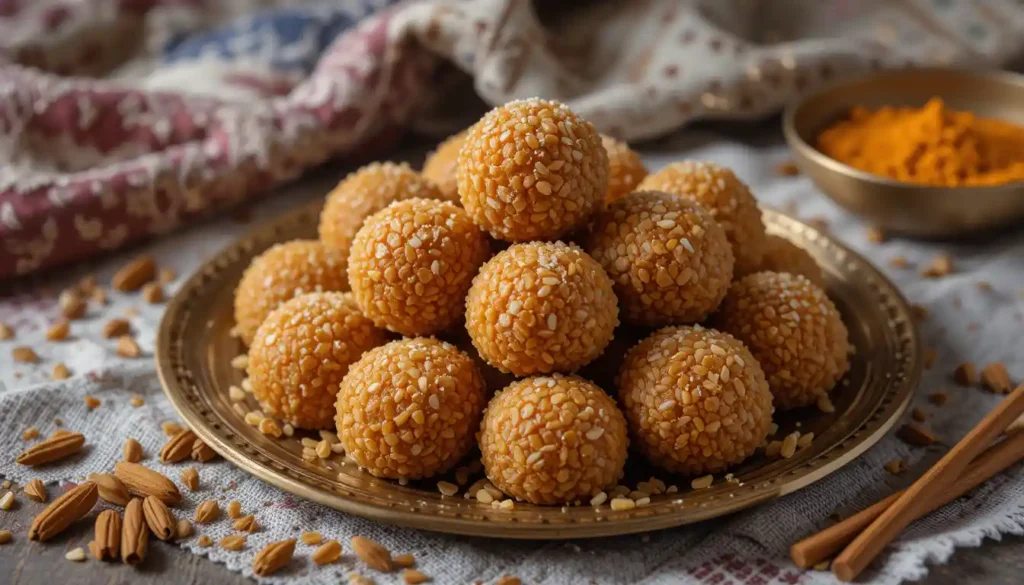
Joynagarer Moa is a limited-edition winter Bengali sweet crafted from fragrant Kanakchur puffed rice and rich Nolen Gur, offering a nostalgic blend of crunch and earthy sweetness.Known Celebrated for its subtle crunch and deep, earthy sweetness, this seasonal Bengali sweet stands out as a treasured winter delicacy.
Authenticity Tip: Look for GI-tagged ones for the real taste.
14. Mihidana
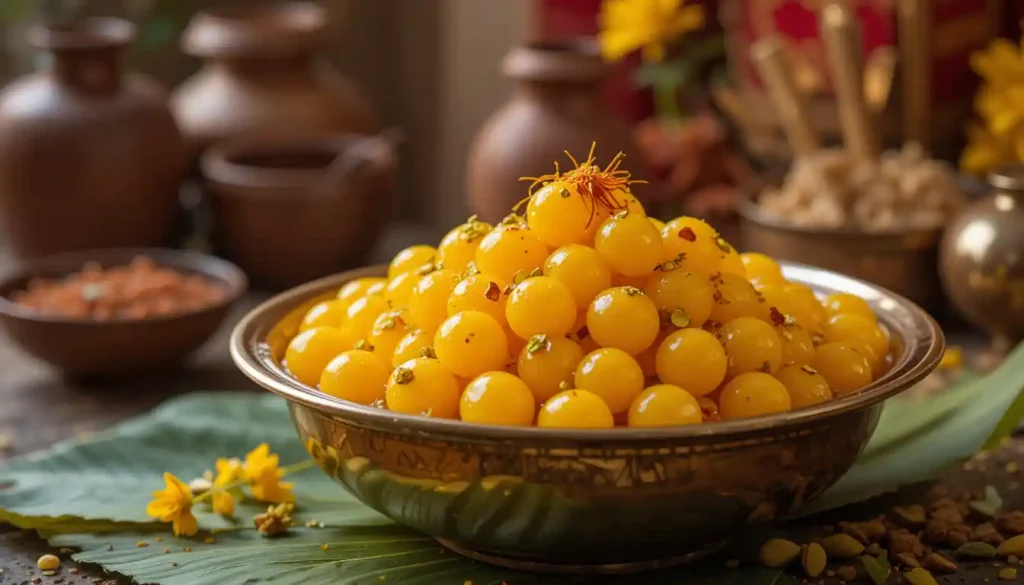
Mihidana is a fine-grained Bengali sweet resembling miniature boondi—served with sugar syrup or paired with Sita Bhog for an authentic festive experience.
Pro tip: Enjoy it warm, topped with a touch of syrup for an irresistible Bengali sweet experience.
15. Shor Bhaja
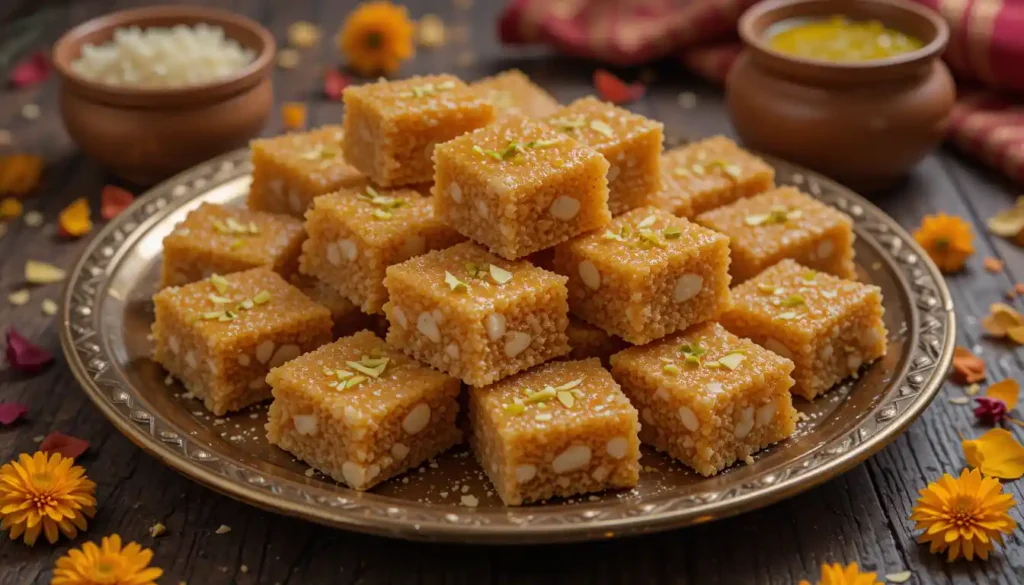
A crispy treat made from multiple layers of milk skin, Shor Bhaja is deep-fried and sugar-dipped.
Why it’s irresistible: Crunchy, rich, and caramelized perfection.
Comparison Table: Bengali Sweets at a Glance
| Sweet Name | Key Ingredient | Texture | Best Season | Unique Factor |
|---|---|---|---|---|
| Rasgulla | Chenna | Spongy | All-Year | Light & Juicy |
| Sandesh | Chenna | Soft/Crumbly | All-Year | Minimalist Flavor |
| Mishti Doi | Milk & Jaggery | Creamy | Summer | Served in Clay Pots |
| Nolen Gur Sandesh | Date Palm Jaggery | Soft | Winter | Seasonal, Earthy Sweetness |
| Pati Shapta | Flour, Coconut | Soft Crepe | Winter | Dessert Roll |
| Labanga Latika | Khoya, Clove | Crispy Outside | All-Year | Clove Aroma |
| Joynagarer Moa | Puffed Rice, Gur | Crunchy, Chewy | Winter | GI-tag Seasonal Treat |
Personal Take: Why Bengali Sweets Are More Than Just Food
Growing up in a Bengali household, Sunday lunches weren’t complete without a plate of Mishti Doi. During Durga Puja, Sandesh and Cham Cham flowed as freely as conversation. Each sweet carries a story, a season, and a sentiment.
Tasting these isn’t just about satisfying your sweet tooth—it’s about experiencing a culture.
Frequently Asked Questions (FAQs)
1. What is the most famous Bengali sweet?
Rasgulla, without a doubt. Its global recognition makes it the crown jewel.
2. Where can I buy authentic Bengali sweets online?
Websites like Balaram Mullick, K.C. Trusted sweet shops like K.C. Das and Mithai Mate offer nationwide delivery, bringing authentic Bengali sweets to your doorstep.
3. Are Bengali sweets healthy?
Some, like Sandesh and Mishti Doi, are less sugary and can be made healthier at home.
4. What makes Nolen Gur special?
Nolen Gur—winter-exclusive date palm jaggery—infuses Bengali sweets with a deep, caramel-like sweetness and a distinctive aroma that lingers long after the last bite.
5. Can Bengali sweets be stored?
Yes, most can be refrigerated for 3–5 days, but best enjoyed fresh.
6. Do Bengali sweets contain gluten?
Many Bengali sweets are naturally gluten-free, but it’s always wise to check labels for specific ingredients.
7. Is Mishti Doi the same as yogurt?
No. It’s sweetened and fermented in a way that gives it a rich, caramelized f8. What’s the difference between Sandesh and Rasgulla?
While Sandesh boasts a dry, refined texture accented with saffron or cardamom, Rasgulla charms with its airy, syrup-soaked softness—two legendary Bengali sweets with distinct personalities.
9. Are these sweets vegetarian?
Yes, traditionally made without eggs.
10. Which Bengali sweet is best for gifting?
With its elegant presentation and long shelf life, Sandesh—especially the Nolen Gur version—is an ideal Bengali sweet for gifting or festive travel. Bengali sweet gift or festive treat.
11. Can I make Bengali sweets at home?
Absolutely! Start with simple ones like Sandesh or Mishti Doi.
12. Are Bengali sweets available outside India?
Yes, in Indian sweet shops across major cities globally.
Final Thoughts + Call to Action
Bengali sweets aren’t just confections—they’re traditions passed down generations, made with love, and best enjoyed with stories. Whether you’re a sweet enthusiast or a curious traveler, these 15 delights are essential milestones in your culinary journey.
Which Bengali sweet is your favorite—or the one you’re dying to try? Let us know in the comments below, and don’t forget to share this list with your foodie friends. Want more delicious stories like this? Subscribe to our blog or explore our full Indian dessert guide here!




